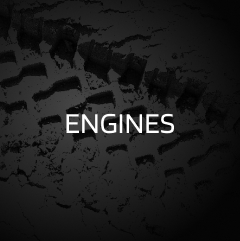 CCA Spares
CCA Spares
Engine Control Units (ECUs) – Orchestrating Optimal Performance
As we progress in our exploration of internal combustion engines, our attention now turns to a component that acts as the brain of the engine: the Engine Control Unit (ECU). Join us in unraveling the functions, capabilities, and significance of ECUs in orchestrating optimal engine performance.
Functions of the Engine Control Unit (ECU):
Explore the primary functions of the ECU:
- Fuel Injection Control: The ECU precisely controls the timing and duration of fuel injection for optimal combustion.
- Ignition Timing Control: It manages the ignition timing, ensuring the spark plug fires at the right moment for efficient combustion.
- Air-Fuel Ratio Adjustment: The ECU adjusts the air-fuel mixture based on various parameters, optimizing combustion efficiency.
- Idle Speed Control: It regulates the engine’s idle speed for stable operation during periods of no acceleration.
- Emission Control: The ECU monitors and controls various components to minimize harmful emissions and comply with environmental standards.
Components of the ECU:
Dive into the key components that make up the ECU:
- Microprocessor: The microprocessor is the central processing unit that executes the ECU’s programming and calculations.
- Sensors: Various sensors, such as oxygen sensors, throttle position sensors, and mass airflow sensors, provide real-time data to the ECU.
- Actuators: Actuators, including fuel injectors and ignition coils, are controlled by the ECU to execute specific functions.
Data Inputs and Sensors:
Understand the types of sensors that provide crucial data to the ECU:
- Oxygen Sensors: Monitor the oxygen content in the exhaust gases, helping the ECU adjust the air-fuel ratio.
- Throttle Position Sensors: Inform the ECU about the position of the throttle, influencing fuel delivery.
- Mass Airflow Sensors: Measure the amount of air entering the engine, aiding in air-fuel ratio adjustments.
Programming and Calibration:
Explore how the ECU’s programming and calibration are crucial for tailoring engine performance to specific requirements:
- Factory Calibration: Manufacturers calibrate ECUs to provide a balance between performance, fuel efficiency, and emissions compliance.
- Aftermarket Tuning: Enthusiasts may opt for aftermarket tuning to modify ECU parameters for enhanced performance.
Engine Mapping and Adaptive Learning:
ECUs utilize engine maps to determine optimal settings based on operating conditions. Learn how adaptive learning allows the ECU to adjust parameters over time for improved efficiency.
Advanced ECU Features:
Advancements in ECU technology have led to features such as:
- Variable Valve Timing (VVT): Adjusts the timing of the opening and closing of engine valves for optimized performance.
- Cruise Control: The ECU can manage cruise control functions for maintaining a consistent speed.
- Engine Diagnostics: Modern ECUs can detect and store error codes for diagnostic purposes, aiding in troubleshooting.
Customization and Performance Enhancement:
Enthusiasts may explore ECU customization and performance enhancements to achieve specific goals, such as increased horsepower or improved fuel efficiency.
Future Trends in ECU Technology:
Explore emerging trends in ECU technology, including:
- Artificial Intelligence (AI): Integration of AI for adaptive and predictive engine control.
- Connected ECUs: ECUs that communicate with each other for more comprehensive control and optimization.
In conclusion, the ECU serves as the command center of the engine, orchestrating a symphony of functions for optimal performance. This article has provided a comprehensive exploration of its functions, components, and significance in the overall operation of internal combustion engines. Stay tuned for the next installment as we continue our journey through the intricate components of internal combustion engines.

